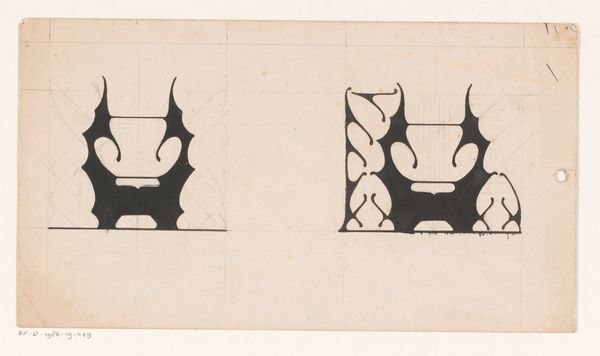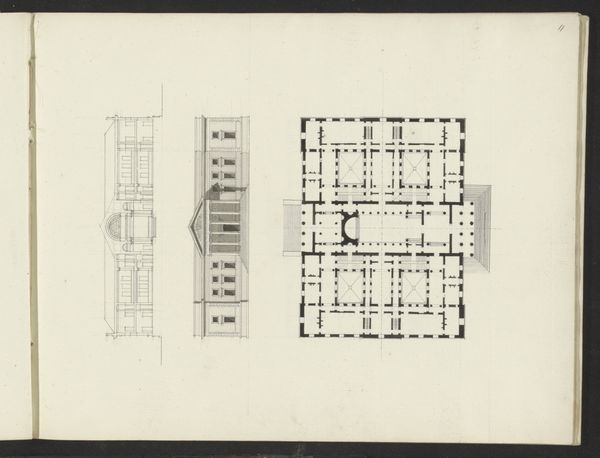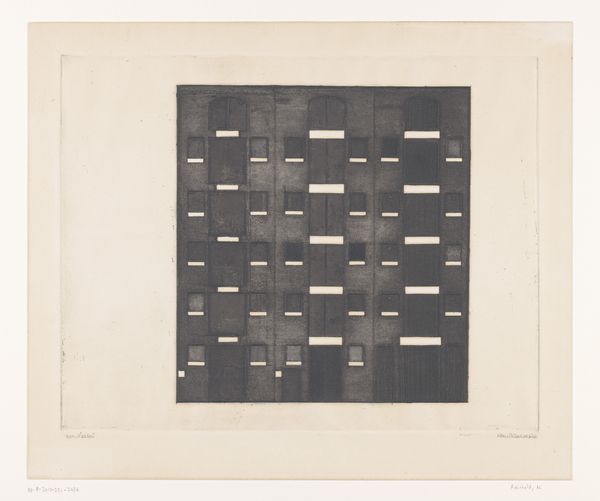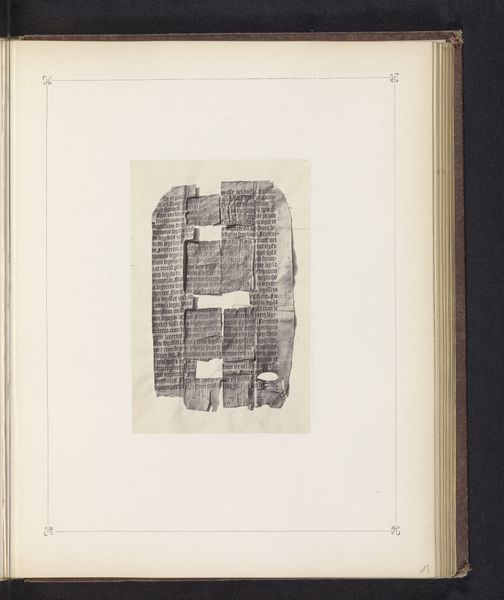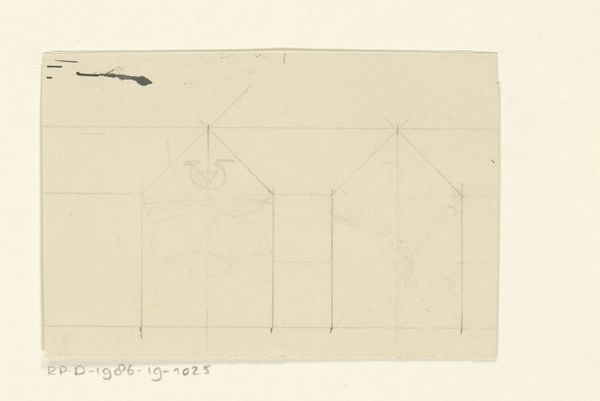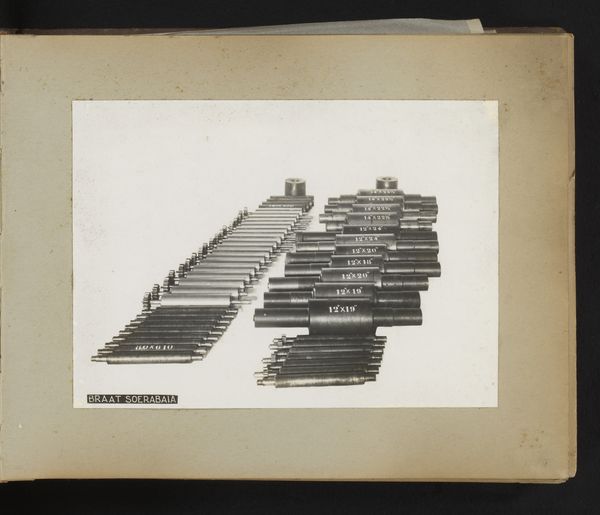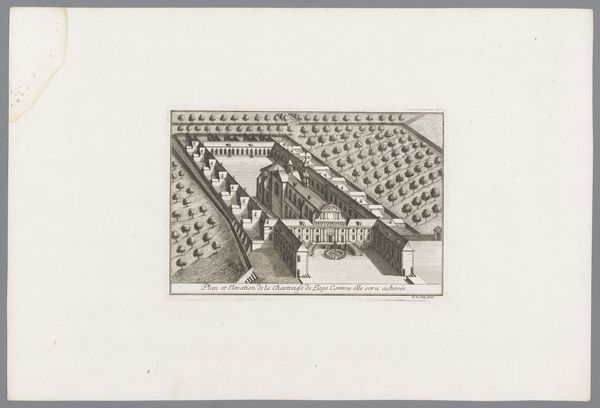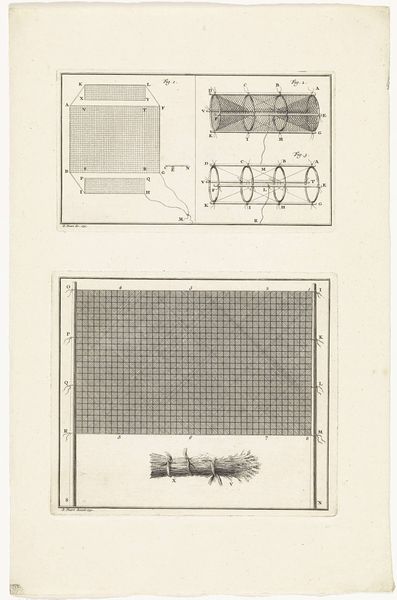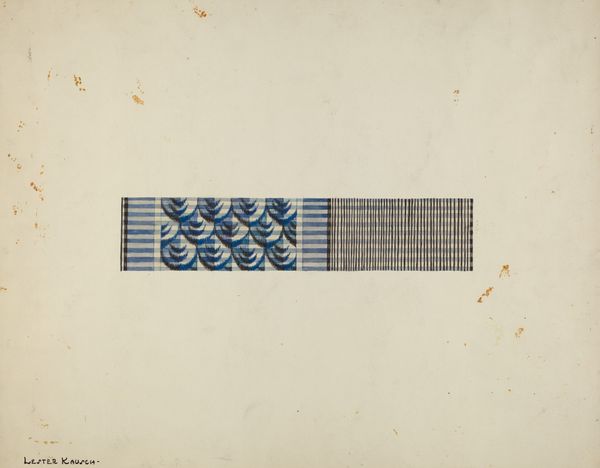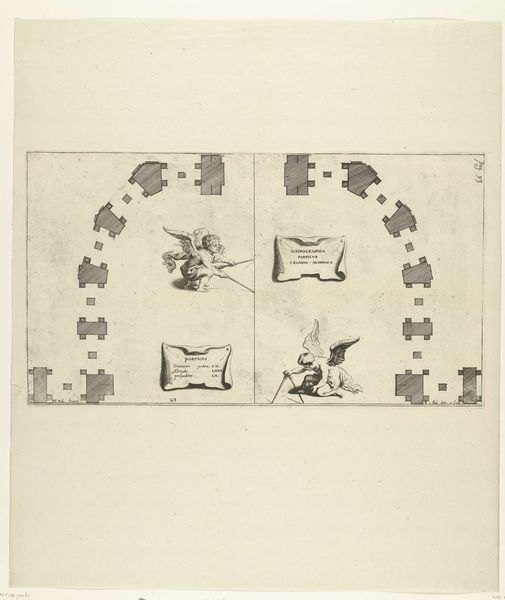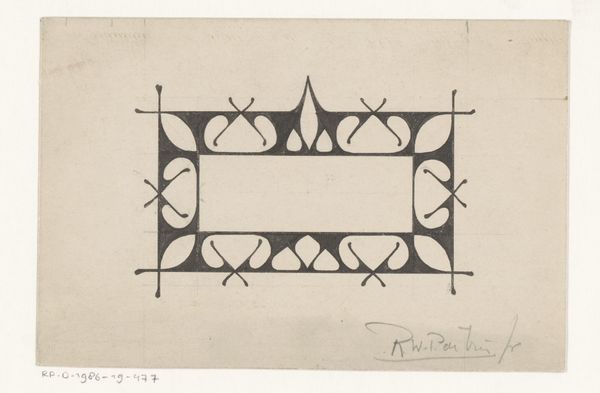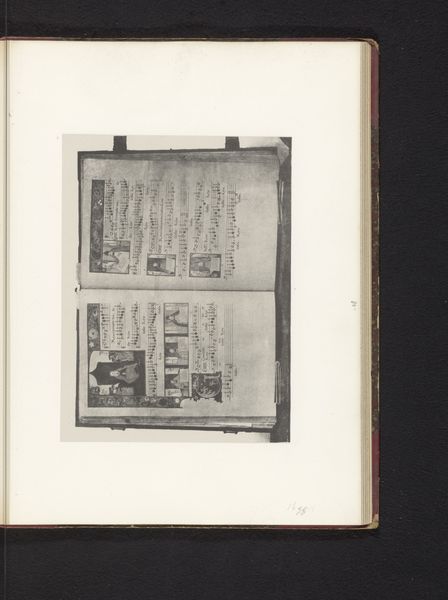
#
photo of handprinted image
#
toned paper
#
childish illustration
#
shading to add clarity
#
ink paper printed
#
old engraving style
#
personal sketchbook
#
ink colored
#
sketchbook drawing
#
cartoon style
Dimensions: height 322 mm, width 531 mm
Copyright: Rijks Museum: Open Domain
Curator: Immediately, I see disruption, a controlled chaos somehow contained by that gridded background. It feels like looking at a city undergoing some radical deconstruction. Editor: You've keyed into the inherent tension masterfully. What you’re experiencing ties rather beautifully into the artwork itself. What we have here is "Raderboot (onderste blad)"—or, Paddle Steamer—by Samuel Jessurun de Mesquita, created sometime between 1883 and 1942. The artist worked in the Netherlands, a geography that profoundly influenced artistic perspective. Curator: Paddle Steamer? Well, I missed the boat on that one, haha. But that grid is still front and centre for me. The rigid structure against the unruly image—perhaps a nod to the industrial age bearing down? Editor: Exactly! It serves as a poignant counterpoint, illustrating the fraught relationship between nature and industry, and perhaps speaking to larger power dynamics in society during the early twentieth century. We see that dichotomy emerge over and over, and so considering Mesquita’s socio-political environment seems unavoidable. Curator: True. He gives us sharp angles meeting cloudy bursts and smokestacks rising; you can almost hear the clamor. I get the sense this wasn’t meant as a literal rendering but a statement. Editor: Certainly, the woodcut medium adds to that sense of drama, doesn’t it? Stark contrasts and forceful lines emphasize that the illustration seeks a stark, evocative symbolism that is less interested in realistic representation. Curator: It's got me thinking about progress, what it costs, and who bears the brunt of that cost... Heavy stuff lurking beneath what looks like such a simple image at first glance! Editor: And that’s the ongoing conversation isn't it? That through engaging thoughtfully and critically, what might appear elementary evolves into complex cultural commentary. What might have felt remote can suddenly become startlingly resonant, even today. Curator: Absolutely, what initially looked like fractured composition is really an appeal. Mesquita really forces a dialogue. It’s an agitation for acknowledgement.
Comments
No comments
Be the first to comment and join the conversation on the ultimate creative platform.
